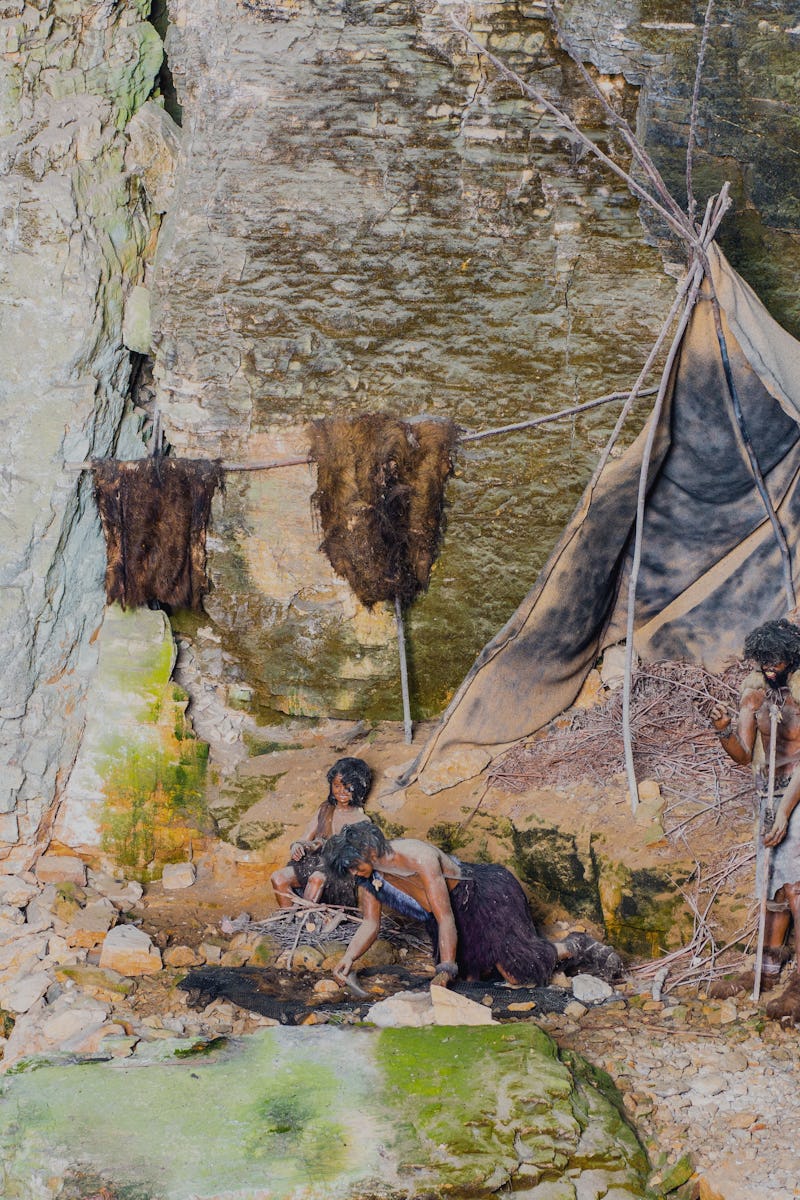
Gregory_DUBUS/E+/Getty Images
"their shared history"
Neanderthal DNA discovery solves a human history mystery
Scientists were finally able to sequence Y chromosomes from Denisovans and Neanderthals.
by Grace BrowneFor what felt like forever, evolutionary researchers were frustrated: They simply could not find the Neanderthal Y chromosome — there were just no good samples to be found.
The Y chromosome is only possessed by males, passed exclusively from father to son. The issue was the lack of robust DNA from Neanderthal men, which had been preserved badly in comparison to the females’.
However, scientists have finally managed to get their hands on some. In a study published in September of this year, a team of researchers used an unorthodox method to fish out some Y chromosome molecules from three male Neanderthals who lived around 38,000 to 53,000 years ago.
INVERSE IS COUNTING DOWN THE 20 STORIES REDEFINING 'HUMAN' FROM 2020. THIS IS NUMBER 7. SEE THE FULL LIST HERE.
Taking a somewhat unconventional approach, they reconstructed the molecules from the microbial DNA that inhabited the ancient bones and teeth. In the process, they gained fascinating insights into our long-extinct relatives.
What was discovered — It turns out, Neanderthals were so-called stripped of their masculinity when we, the Homo sapiens, mated with Neanderthal women over 100,000 years ago. This species crossover resulted in the Neanderthal Y being slowly bred out over time, and the human Y chromosome taking up its place.
The researchers were also able to reconstruct the Y chromosomes of two male Denisovans, the close cousins of Neanderthals who inhabited much of Asia. Surprisingly, the researchers discovered that the Neanderthal and modern human Y chromosomes were more alike in comparison to the Denisovan Y chromosomes.
This may have happened simply because the “Denisovans were so far East that they did not encounter these very early modern human groups,” Martin Petr, the first author of the paper and a postdoctoral candidate at the Max Planck Institute for Evolutionary Anthropology, and Janet Kelso, the paper’s senior author and a professor at the Institute, told Inverse.
“The fact that Neanderthal Y chromosomes are more similar to modern humans than Denisovans is very exciting as it provides us with a clear insight into their shared history.”
Why did the human Y chromosome overtake the Neanderthals’? — We could point to natural selection as the culprit, due to the fact that the Neanderthals had started to harbor some deleterious mutations in their DNA, which would explain why human DNA would oust it.
These findings provide us with new intel on the interactions between us and our ancient-human relatives — suggesting that they may have met and began to mate as early as 370,000 years ago.
INVERSE IS COUNTING DOWN THE 20 STORIES WHICH REDEFINE WHAT IT MEANS TO BE 'HUMAN' FROM 2020. THIS IS NUMBER 7. READ THE ORIGINAL STORY HERE.
This article was originally published on